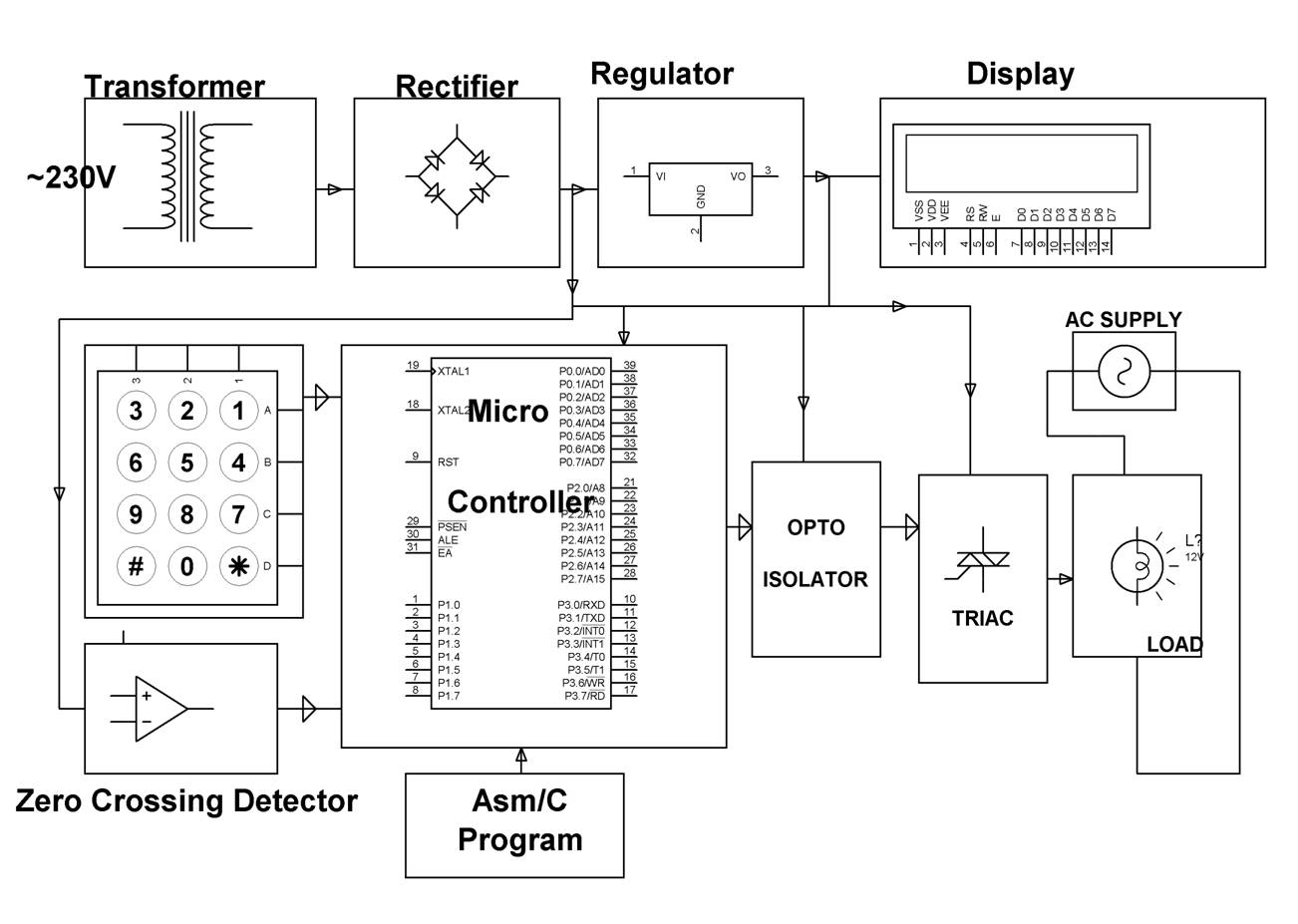Smart AC Power Control: A Programmable Interface for Customized Automation
Based on the working principle of thyristor firing angle control, AC power can be controlled. The system uses a display unit to show the full power, and then the user can input the desired percentage to reduce the power to the load. To maintain the load power, the firing angle will be automatically adjusted. The project uses a lamp to make the input power equal to the required power. This process is achieved by connecting a TRIAC in series with the AC load. The system uses the 8051 microcontroller family. A keypad is used to input information to the microcontroller, with ZVS as a reference. An LCD display is used to display information.
AC Power Controller with Programmable Interference
The block diagram of AC power controller with programmable interference can be built with Microcontroller (AT89S52/AT89C51), Power Supply Block, Keypad, LM358 (Comparator), LCD Display, MOC3021, 1N4007, BC547, LED, Resistors, Capacitors, SCR. Keil µVision IDE and MC Programming Language: Embedded C

Power Supply
The power supply circuit can be built with a step-down transformer, which steps down …





